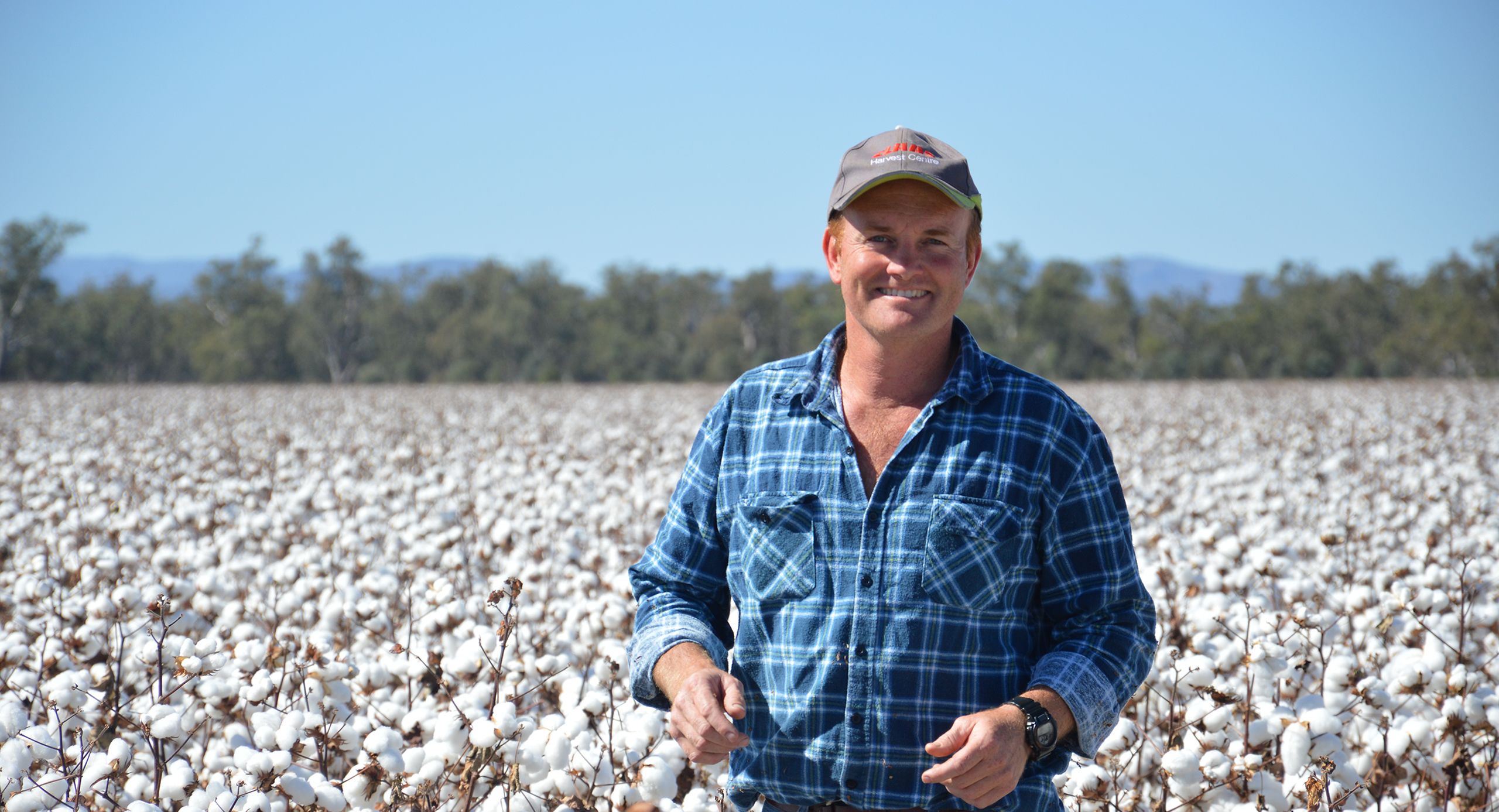About: Andrew and Heike Watson are fifth-generation farmers with a vision of creating a sustainable, profitable operation that minimizes environmental impact. Adjacent to the Namoi River, Kilmarnock Farming Ltd. spans several properties across 3,480 hectares near Boggabri, New South Wales. An irrigated and dryland cotton and grain farming system, Kilmarnock includes grazing land and produces crops such as corn, sorghum, wheat, durum, canola, legumes, and chickpeas.
The Watson family is well known for their regenerative farm management practices. These initiatives range from fencing off riverbanks from stock to planting native trees and shrubs as well as dedicating portions of the farm as permanent heritage sites. In recognition of these best practices, the family has received a number of production and environmental awards over the years, including the Brownhill Cup Conservation Award and a Landcare Sustainable Farming Award, among others.
Location: Boggabri, New South Wales; Australia
Farmers Edge Technologies: Satellite Imagery, On-Farm Weather Stations, Variable Rate Technology
Usage Case: Better coordinate and time crop production to increase yield while reducing costs and minimizing the environmental footprint.
Duration: Four years
Challenge:
The seasonal conditions in NSW range from heavy rains to extremely dry periods, forcing growers to continually plan for variability. Additional concerns for the Watsons include the increase in mining in their district, as well as potential degradation of ground and surface water sources combined with the impact of on-farm operations. While Andrew and his family have achieved much, they are focused on continuous improvement.
“Australian farming is an industry that is constantly challenging the status quo — to be successful, growers are forced to make production more sustainable and profitable,” Andrew stated.
At the core of the Watsons’ success has been a proactive approach to seek out and adopt new technologies that support their farming and environmental philosophy. Toward this objective, Andrew had been researching the concept of variable rate fertilisation for a number of years but was concerned about how to launch such an initiative cost-effectively.
Solution:
After determining that Farmers Edge supported equipment monitoring as well as tracking weather and field-centric data, Andrew was ready to pilot the platform.
“The first advantage we saw was using the sensors to follow the moisture map on the wheat and canola harvester, providing guidance on how to manage the moisture of the crops we were reaping. We stored the canola in our silos for a while and couldn’t afford to have any excess moisture. The technology allowed us to easily keep an eye on the harvester from afar and change fields immediately as required.”
Andrew was pleased to discover that Farmers Edge supported the local Australian-owned sprayer manufacturer, Goldacres, which he leveraged with other equipment like Caterpillar on his fields, plus a John Deere cotton picker and harvester. Watson explained that although there are other companies that offer precision ag technology, Farmers Edge was the only solution to support multiple equipment and data platforms to deliver reports in one consolidated view.
That particular year proved especially challenging for cotton, noted Watson, because it was so dry. Watson completed three separate plantings and replantings in the one field over the course of six weeks, dealing with massive differences in crop growth. Using Farmers Edge satellite feeds and images of the fields, he and his small team were able to track the variations in growth of the cotton by zone and apply different growth regulated rates to treat each area.
“Net-net, the field went from a potential disaster to being almost the top field during that season, as well as getting harvested in a timely fashion. That was a couple of years ago — we now leverage Farmers Edge throughout all of our cotton fields and have a wealth of data.”
That data has enabled Watson to more proactively plan for the “norm” of constant growth variation.
“Just last year, our average yield was an 11% increase on our previous best ever yield. A big part of that is the ability to manage maturity of the field so all the crops are ready at the same time, and you get everything to harvest faster. The variable rate technology allows us to synchronize readiness and not wait for one part of a field prior to starting the defoliation before cotton harvest.”
The ability to quantify applications of nitrogen and minimize overuse has also resulted in some initial savings. The average application of anhydrous ammonia on one field decreased from 190 to 130 units at $51 Australian per hectare — savings which Watson believes he can leverage across other fields over the long-term. Watson also wants to extend variable rate fertilisation to the application of other nutrients including phosphorus, potassium, and zinc. This technique will optimize the nutrient makeup of the soil, while deriving further cost savings from more precisely applied amounts.
“Farmers Edge is brilliant in automating the collection and presentation of data sent from the tractor or harvester and overlaying it with crop maps and other critical views to enhance our operations.”
-Andrew Watson, Director, Kilmarnock

